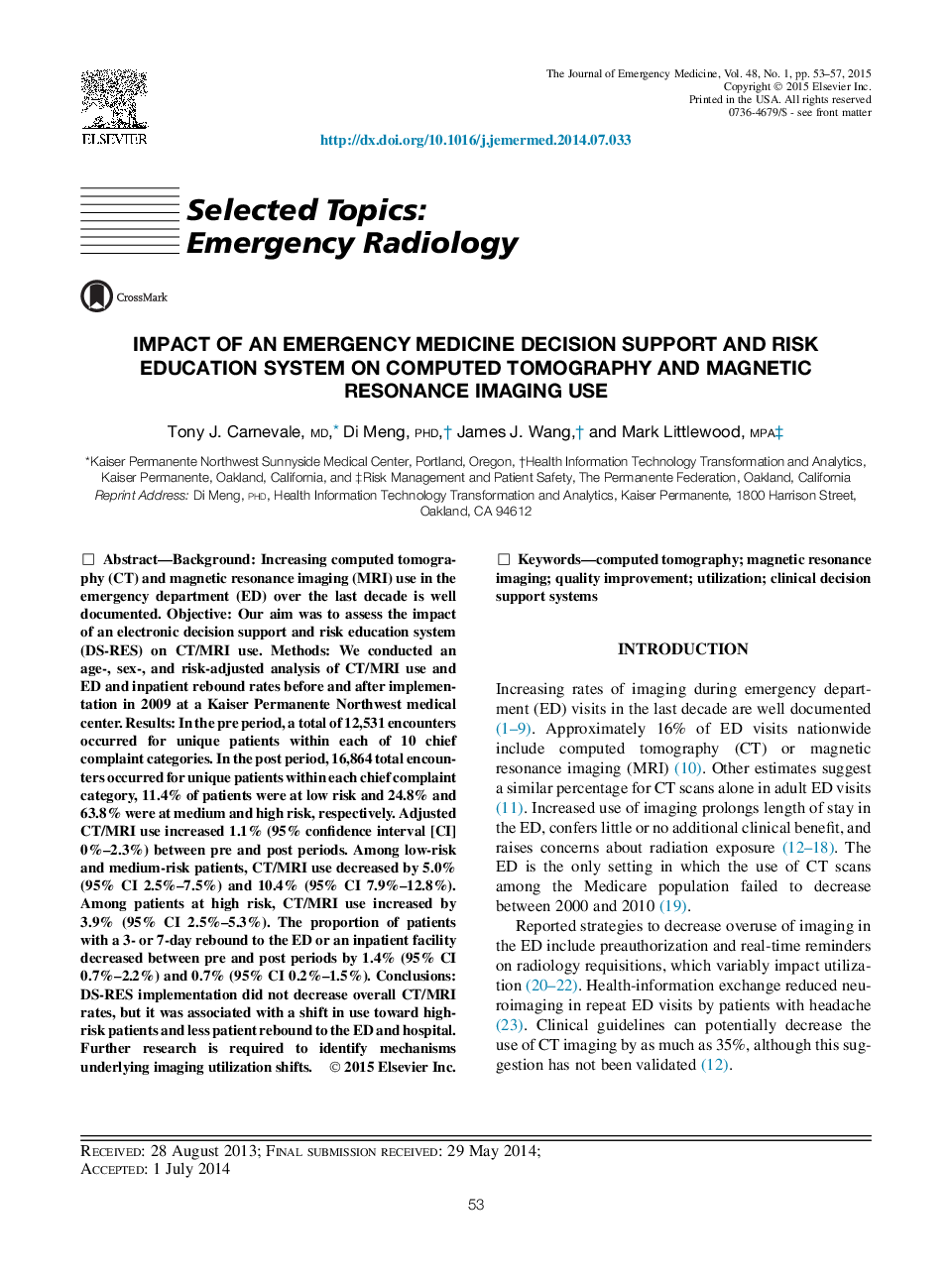| Article ID | Journal | Published Year | Pages | File Type |
|---|---|---|---|---|
| 3246080 | The Journal of Emergency Medicine | 2015 | 5 Pages |
BackgroundIncreasing computed tomography (CT) and magnetic resonance imaging (MRI) use in the emergency department (ED) over the last decade is well documented.ObjectiveOur aim was to assess the impact of an electronic decision support and risk education system (DS-RES) on CT/MRI use.MethodsWe conducted an age-, sex-, and risk-adjusted analysis of CT/MRI use and ED and inpatient rebound rates before and after implementation in 2009 at a Kaiser Permanente Northwest medical center.ResultsIn the pre period, a total of 12,531 encounters occurred for unique patients within each of 10 chief complaint categories. In the post period, 16,864 total encounters occurred for unique patients within each chief complaint category, 11.4% of patients were at low risk and 24.8% and 63.8% were at medium and high risk, respectively. Adjusted CT/MRI use increased 1.1% (95% confidence interval [CI] 0%–2.3%) between pre and post periods. Among low-risk and medium-risk patients, CT/MRI use decreased by 5.0% (95% CI 2.5%–7.5%) and 10.4% (95% CI 7.9%–12.8%). Among patients at high risk, CT/MRI use increased by 3.9% (95% CI 2.5%–5.3%). The proportion of patients with a 3- or 7-day rebound to the ED or an inpatient facility decreased between pre and post periods by 1.4% (95% CI 0.7%–2.2%) and 0.7% (95% CI 0.2%–1.5%).ConclusionsDS-RES implementation did not decrease overall CT/MRI rates, but it was associated with a shift in use toward high-risk patients and less patient rebound to the ED and hospital. Further research is required to identify mechanisms underlying imaging utilization shifts.
